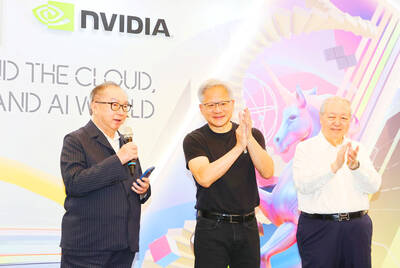Greece will probably have to restructure its debt again and this may involve bailout partners such as European governments, said Moritz Kraemer, head of sovereign ratings at Standard & Poor’s.
There may be “down the road, I’m not predicting today when another restructuring of the outstanding debt [will be necessary],” he said at an event in London yesterday. “At that time, maybe the official creditors need to come into the boat.”
Speaking at the same event at the London School of Economics, Poul Thomsen, the IMF mission chief to Greece, said that while Greece has made an “aggressive” fiscal adjustment, it will take at least a decade to fully complete the country’s reforms.
Caretaker Greek Prime Minister Lucas Papademos won parliamentary approval on March 21 for a second 130 billion euro (US$173 billion) rescue program. Passage of the legislation moves the country a step closer to elections that may be held as early as next month. Greece pushed through the biggest sovereign debt restructuring in history earlier this month, paving the way for the bailout.
Thomsen said that after the elections, there is “no doubt it will have to reduce its fiscal deficit.”
He also said it was not clear when Greece will be able to return to markets.
“It remains uncertain, with this high level of debt and the risks the program faces because of possible resistance to reforms, when market access will return,” he said. “There’s no room for maneuver or policy slippage.”
Italian Prime Minister Mario Monti said this week that the euro area’s woes are “almost over” after a slow initial response by policymakers.
Thomsen said that while Greece’s fiscal adjustment has been “unprecedented, very impressive and undoubtedly socially very painful,” a “major adjustment is still needed, of 6-7 percent of gross domestic product.”
Kraemer said that the priority some creditors have been claiming, such as the European Central Bank, is complicating the ability of Greece to lower its borrowing costs and be able to return to bond markets.
“More and more official creditors have been jumping the queue and becoming so-called preferred creditors, which means in the case of a restructuring, they do not participate,” he said. For “the regular bond holders, the risk increases significantly. That means that the investor will demand a higher interest rate from Greece and that makes it harder for Greece and other countries on the periphery to establish a sustainable debt trajectory going forward.”
Kraemer said that while making adjustments in a monetary union is “more difficult,” it’s not an impossible task “if the political preconditions and flexibility are there.”
European officials said this week that Greece must step up efforts to tighten the budget and overhaul the economy to prevent the second bailout from collapsing.
Asmussen’s comments were echoed by EU Economic and Monetary Affairs Commissioner Olli Rehn, who said that “challenges remain” as Greece seeks to cut its debt to about 116 percent of GDP in 2020 from more than 160 percent of GDP last year.

AI SERVER DEMAND: ‘Overall industry demand continues to outpace supply and we are expanding capacity to meet it,’ the company’s chief executive officer said Hon Hai Precision Industry Co (鴻海精密) yesterday reported that net profit last quarter rose 27 percent from the same quarter last year on the back of demand for cloud services and high-performance computing products. Net profit surged to NT$44.36 billion (US$1.48 billion) from NT$35.04 billion a year earlier. On a quarterly basis, net profit grew 5 percent from NT$42.1 billion. Earnings per share expanded to NT$3.19 from NT$2.53 a year earlier and NT$3.03 in the first quarter. However, a sharp appreciation of the New Taiwan dollar since early May has weighed on the company’s performance, Hon Hai chief financial officer David Huang (黃德才)

The Taiwan Automation Intelligence and Robot Show, which is to be held from Wednesday to Saturday at the Taipei Nangang Exhibition Center, would showcase the latest in artificial intelligence (AI)-driven robotics and automation technologies, the organizer said yesterday. The event would highlight applications in smart manufacturing, as well as information and communications technology, the Taiwan Automation Intelligence and Robotics Association said. More than 1,000 companies are to display innovations in semiconductors, electromechanics, industrial automation and intelligent manufacturing, it said in a news release. Visitors can explore automated guided vehicles, 3D machine vision systems and AI-powered applications at the show, along

FORECAST: The greater computing power needed for emerging AI applications has driven higher demand for advanced semiconductors worldwide, TSMC said The government-supported Industrial Technology Research Institute (ITRI) has raised its forecast for this year’s growth in the output value of Taiwan’s semiconductor industry to above 22 percent on strong global demand for artificial intelligence (AI) applications. In its latest IEK Current Quarterly Model report, the institute said the local semiconductor industry would have output of NT$6.5 trillion (US$216.6 billion) this year, up 22.2 percent from a year earlier, an upward revision from a 19.1 percent increase estimate made in May. The strong showing of the local semiconductor industry largely reflected the stronger-than-expected performance of the integrated circuit (IC) manufacturing segment,

NVIDIA FACTOR: Shipments of AI servers powered by GB300 chips would undergo pilot runs this quarter, with small shipments possibly starting next quarter, it said Quanta Computer Inc (廣達), which supplies artificial intelligence (AI) servers powered by Nvidia Corp chips, yesterday said that AI servers are on track to account for 70 percent of its total server revenue this year, thanks to improved yield rates and a better learning curve for Nvidia’s GB300 chip-based servers. AI servers accounted for more than 60 percent of its total server revenue in the first half of this year, Quanta chief financial officer Elton Yang (楊俊烈) told an online conference. The company’s latest production learning curve of the AI servers powered by Nvidia’s GB200 chips has improved after overcoming key component